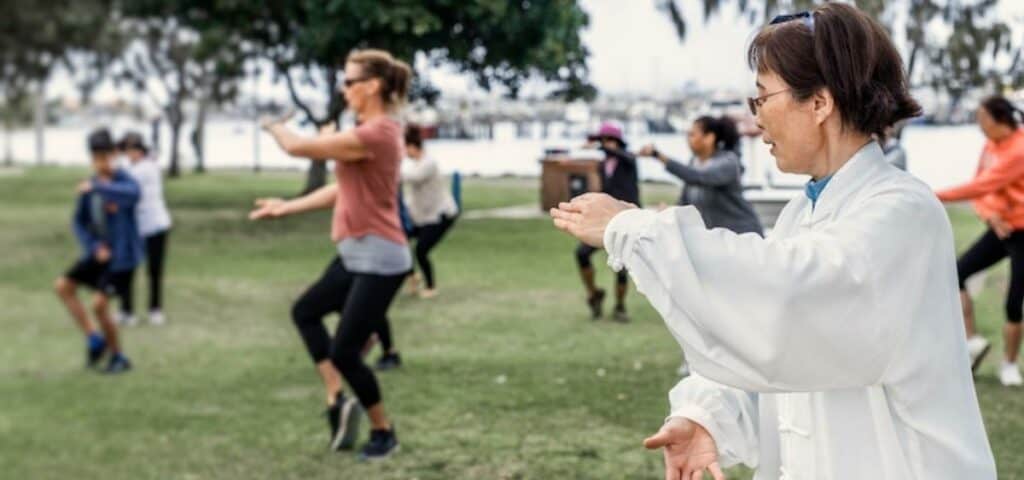Everyone longs to love and be loved by the people around them. After all, love connects us, makes us feel valued and understood.
Because love appears in many contexts—between friends, colleagues, family members, pets, neighbors, nature, and even self-love—it can mean different things to different people in different situations, making it sometimes difficult to define.
One profound aspect of love is contingency—the deep connection and mutual understanding that comes when we truly see and appreciate one another.
This feeling of contingency forms the core of a secure attachment, built through presence and attunement—two crucial skills for demonstrating empathy and connection with another person.
Practicing presence means mindfully and intentionally listening to better support someone through their experiences.
Attunement involves deeply understanding someone by actively listening, tuning into their experience, and expressing empathy.
Together, they create strong, healthy relationships. Let’s explore why attunement matters and how it supports secure attachments.
Share this Article:
Top Picks for You:
- The Four Attachment Styles: Secure, Avoidant, Ambivalent, and Disorganized
- Toxic Shame: What Is It & What to Do About It
- The Power of Trauma-Informed Care: Understanding What Happened to You
- Somatic Resilience: Overcoming Early Trauma (with Peter A. Levine, PhD)
- Neuroplasticity: Rewiring the Traumatized Brain
Four Ways to Practice Secure Attachment in Your Relationships
Why Attunement Matters
Attunement is one of the cornerstones of secure attachment. When we’re babies, we rely on our caregivers for survival. If a parent or caregiver is attentive to our needs and responds consistently and appropriately, we learn that our environment is generally safe and that we are seen, understood, and valued.
If our caregivers do not provide consistent emotional support and attention during our childhood, we may develop insecure attachment adaptations (or styles) that can influence our adult relationships.
The good news is that we are biologically primed for secure attachment, and we can cultivate skills and practices to reestablish this natural state.
Since attachment wounding is relational, it makes sense that healing also happens through relationships.
But what can we do to develop these skills and put them into practice? What can you do today to strengthen your secure attachment?
Practicing Presence to Support Healing
Thankfully, there are practices that can help you become more mindful and attuned in your relationships––promoting safety, deepening connections, and building a sense of being understood and valued.
For therapists, counselors, educators, and coaches, these practices also strengthen the therapeutic relationship as you begin the healing journey with your clients.
And if you already have a secure attachment style, strengthening these skills will only deepen your relationships.
Here are four practices to try:
Listen Attentively
Listening attentively may seem obvious, but it’s an incredibly important skill that many of us never learned. Often, we actively interrupt or mentally plan our next response instead of patiently allowing others to express their feelings and perspectives.
This space is crucial, especially during disagreements. When we listen intentionally, we avoid immediate denial or defensiveness. Instead, we listen, pause, and then respond.
Try counting to three (in your head!) after the person finishes speaking. This helps you regulate your response and shows you’ve taken time to consider their words.
To listen more effectively, reflect back what you hear and ask caring, clarifying questions. This helps you better understand and attune with the other person. You might say “I hear you saying ______. Is that accurate? Is there anything I’m missing or misunderstanding?”
This approach ensures you truly understand the other person’s perspective and aren’t responding from a place of projection or defensiveness—after all, we aren’t mind readers!
Expressing empathy further demonstrates your understanding: “I can see why that upset you and how much it hurt you”

Notice and Mirror Nonverbal Communication
Effective communication extends beyond the words we speak. It also involves understanding and responding to non-verbal cues.
To practice active attunement, we should not only listen to what someone is saying, but how they say it. Pay attention to facial expressions, gestures, posture, and eye contact to gain a clearer understanding of their feelings and what they are trying to communicate.
Perhaps you’ve experienced this scenario: Someone says they’re “fine,” but their tone is flat, shoulders slumped, and they avoid eye contact.
These non-verbal cues likely suggest they are struggling or even in distress. By recognizing the inconsistency between words and body language, you can respond with greater empathy and care,
We can also use our own nonverbal communication to demonstrate our understanding and compassion. Lean toward the person to let them know we’re engaged and use facial expressions that convey empathy.
Although it might feel a little silly, it can be helpful to practice these mirroring skills outside of a conversation that feels tense or has “high stakes.”
- Sit across from your partner.
- Take turns to be the “leader.”
- The other person “mirrors” the leader’s gestures, poses, and facial expressions.
- Keep it playful to help remember the skill in more serious conversations, when it really matters!





Ready to Begin Your Healing Journey?
Browse on-demand courses and begin learning from top experts today!
New to Attachment? Start your path to healing today!
Discover how to build stronger, healthier relationships with our eBook, Attachment for Everyone. Learn effective ways to communicate and connect with others regardless of your attachment style.

Try the Kind Eyes Exercise
Another very effective way of demonstrating that you are fully “there” for another person is to practice gentle, kind, and consistent eye contact.
Be mindful that some attachment styles may find too much eye contact unsettling, so find a balance that works for both of you.
A simple practice to reinforce the power of eye contact is the Kind Eyes Exercise. This simple, yet effective exercise can help build a sense of safety and attunement.
Here’s how to try the practice on your own:
- Find a comfortable position and close your eyes.
- Imagine looking out into the world and seeing kind eyes (reflecting warmth, compassion, love, and appreciation) back at you. These eyes could belong to:
- Your partner, baby/child, sibling, or best friend
- A pet or other animals
- A spiritual teacher or respected figure (e.g., Byron Katie, Pema Chödrön, the Dalai Lama, Nelson Mandela)
- It might be helpful to recall a time when you surprised someone, and they expressed genuine delight and joy upon seeing you (e.g., “It’s you! I’m so glad you’re here.”).
- It might be a particular look like “You’re special to me”, or “I love you more than anything”
- Notice how it feels to remember or imagine this experience of someone being happy to see you, with kindness and joy evident in their eyes and face.
- Pay attention to what happens in your eyes and your overall physiological, emotional, and cognitive state as you imagine these kind eyes.
- Observe how it feels to allow the nourishment and positive feelings to come into your awareness and affect you emotionally, physically, or cognitively.
- Be kind and compassionate with yourself if painful emotions arise related to past experiences of absent or negative eye contact.
- When you’re ready, gently bring your awareness back to the present moment and your surroundings. You may want to spend some time processing your experiences through journaling, or speaking with your therapist about what came up for you.

Put Away Distractions
In our digitally connected world, constant distractions from our devices can hinder our ability to build and maintain strong, secure attachments with others. It can be especially important to log off and create time and space to interact with the people who are important to you.
People sense when you’re fully present or not—and it matters. Looking at your phone while someone talks can feel like rejection. Even if you think you’re being present, it may not come across that way, and these micro-rejections can add up over time, straining our connections with those we care about.
There are a few strategies to counteract screen time getting in the way of connection.
- Set aside specific “no-phone” times––for example, at the dinner table, or right after work or before bedtime.
- Try engaging in device-free activities like board games, going for walks, or cooking together.
- Make sure to communicate your intention of being present in the relationship. The goal isn’t to ‘police’ screen time, but rather to cultivate emotional intimacy and secure attachment.
Give dedicated, undistracted attention to conversations and interactions, and see the transformative effect it has on your relationships!
Practicing Secure Attachment
We all desire secure attachment. There’s no urge that’s more natural.
While achieving this can sometimes feel challenging, especially for those of us with a history of childhood trauma or attachment wounding, the practices outlined here offer a solid start. Remember, our healing journey requires patience, time, and consistent practice.
The good news is that the more you practice these simple skills, the more natural they become. Each small step you take builds your capacity for secure attachment, making it easier over time to create (and maintain) deep, meaningful connections in all your relationships.


